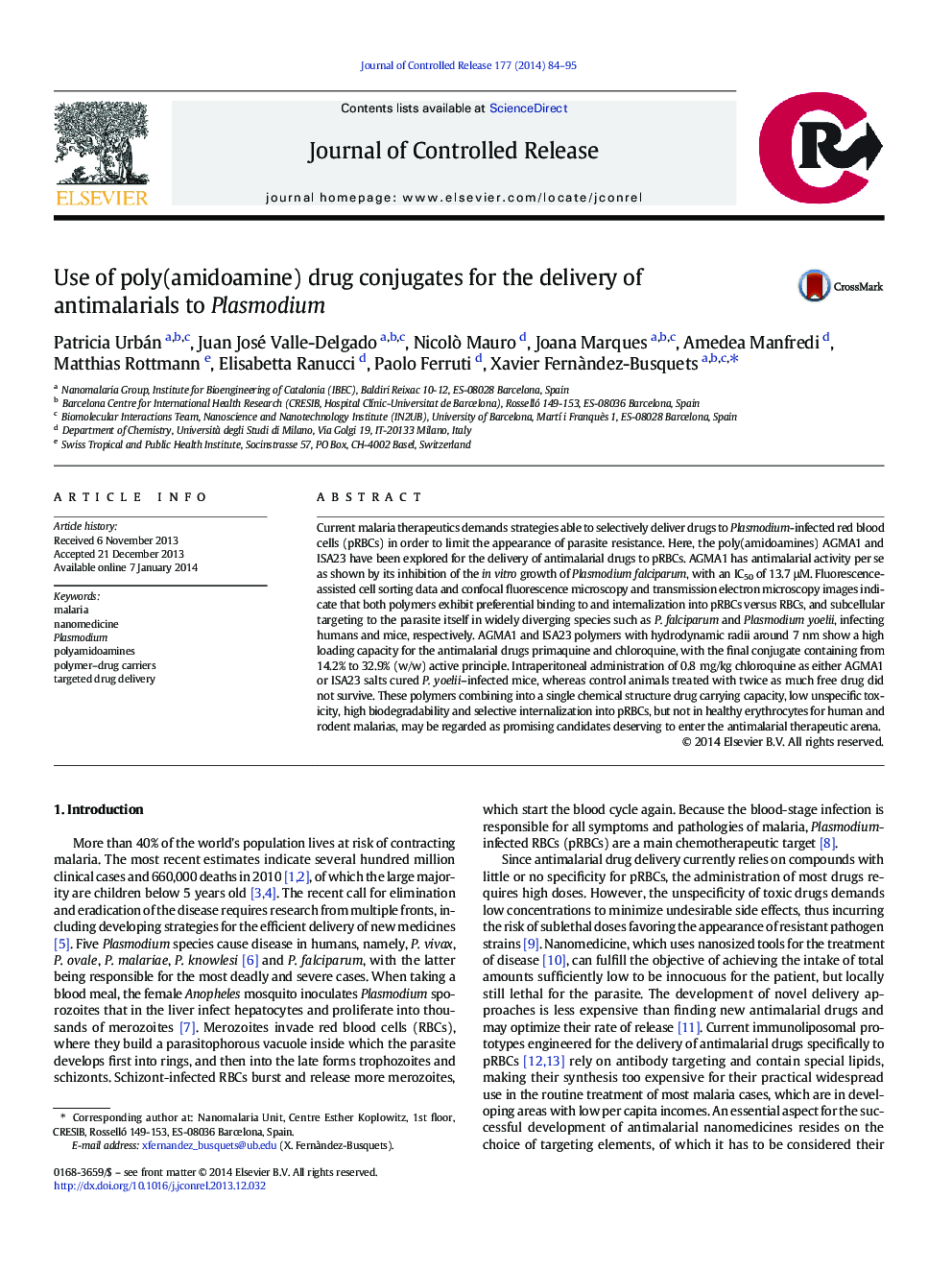| Article ID | Journal | Published Year | Pages | File Type |
|---|---|---|---|---|
| 1424093 | Journal of Controlled Release | 2014 | 12 Pages |
Current malaria therapeutics demands strategies able to selectively deliver drugs to Plasmodium-infected red blood cells (pRBCs) in order to limit the appearance of parasite resistance. Here, the poly(amidoamines) AGMA1 and ISA23 have been explored for the delivery of antimalarial drugs to pRBCs. AGMA1 has antimalarial activity per se as shown by its inhibition of the in vitro growth of Plasmodium falciparum, with an IC50 of 13.7 μM. Fluorescence-assisted cell sorting data and confocal fluorescence microscopy and transmission electron microscopy images indicate that both polymers exhibit preferential binding to and internalization into pRBCs versus RBCs, and subcellular targeting to the parasite itself in widely diverging species such as P. falciparum and Plasmodium yoelii, infecting humans and mice, respectively. AGMA1 and ISA23 polymers with hydrodynamic radii around 7 nm show a high loading capacity for the antimalarial drugs primaquine and chloroquine, with the final conjugate containing from 14.2% to 32.9% (w/w) active principle. Intraperitoneal administration of 0.8 mg/kg chloroquine as either AGMA1 or ISA23 salts cured P. yoelii–infected mice, whereas control animals treated with twice as much free drug did not survive. These polymers combining into a single chemical structure drug carrying capacity, low unspecific toxicity, high biodegradability and selective internalization into pRBCs, but not in healthy erythrocytes for human and rodent malarias, may be regarded as promising candidates deserving to enter the antimalarial therapeutic arena.
Graphical abstractFITC-labeled poly(amidoamine) polymer AGMA1 was incubated for 90 min with a mixture of living Plasmodium falciparum–infected and non-infected erythrocytes before fluorescence microscopy detection of Plasmodium DNA (left) and AGMA1-FITC (center).Figure optionsDownload full-size imageDownload high-quality image (201 K)Download as PowerPoint slide
